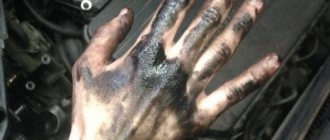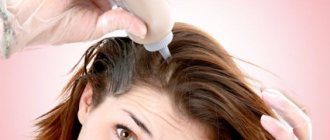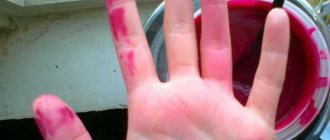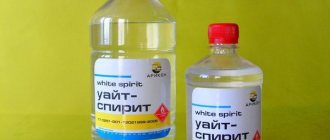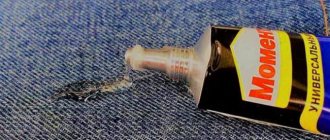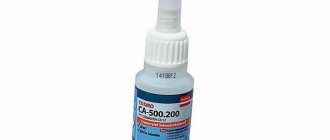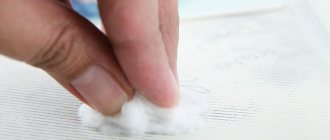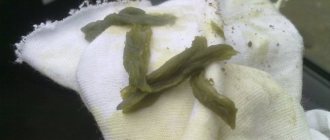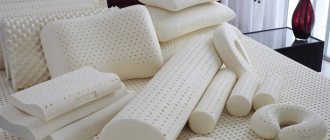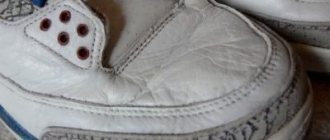Washing off traces of adhesive plaster and its remnants is a long and unpleasant job, which will make your head spin and can lead to skin irritation.
So, let's take a more specific look at how to remove the glue from the patch from the skin?
Fortunately, today many tools and methods have been developed that will help remove the remaining glue as quickly and painlessly as possible. I would like to immediately note that it does not matter what method and substance you decide to use, the main thing is not to exert strong mechanical impacts on the body area in order to avoid damage.
Of course, each manufacturer of adhesives adheres to its own technology for manufacturing products, therefore the adhesive substance will be different in composition and density. Also, each person has their own individual skin characteristics, so sometimes you have to try different methods to choose the right one.
Handy tools for removing glue
This section provides 3 most inexpensive methods that do not require the purchase of additional tools and accessories.
- Warm bath (or soak). As practice shows, many plasters lose their strength when exposed to moisture and heat. Therefore, the easiest way is water procedures. To do this, you don’t have to soak in the bathroom for 5 hours, just fill a basin with warm water and dip the part of your body from which you need to peel off the annoying adhesive plaster. For the best effect, you can rub your body with light movements of your hand and a washcloth.
- Vegetable oil. Thanks to many tests carried out, a result was noticed in which, from exposure to any vegetable oil, the patches lost their stickiness, and sometimes the adhesive composition simply dissolved in it. You just need to soak a cotton swab in oil, apply it to the surface of the patch and wait 10-15 minutes. Then you will need to wipe the skin area with a napkin and, if necessary, repeat the procedure again.
- Ice. If you are going to wipe off the adhesive from your child's skin, it is better not to use this method. People with hypersensitive skin should also avoid it. Of course, using ice will not lead to any side effects; it’s just that the above categories of people have a chance of getting irritated or causing dry skin. To clean your skin with ice, just wrap it in a paper towel and apply it to the desired area. After waiting a few minutes, remove the cold and remove the sticker or any remaining sticker.
Causes of allergies
An allergy to the patch occurs upon contact with its components. An allergen is an adhesive composition, an antiseptic, or any of the medicinal impregnations. More often, a hypersensitivity reaction is observed when using pepper products, since hot pepper is a powerful irritant.
The following factors increase the risk of an allergy to the patch:
- history of atopic dermatitis, eczema and other skin diseases;
- weakened immunity due to diseases, surgical interventions;
- too long use of the product.
How to remove glue with cosmetics?
Among the cosmetic products that will help in the fight against glue residues:
- Children's oil.
- Warm compresses with baby oil.
- Moisturizing body lotion.
Children's olia works on the principle of vegetable oil, at the same time gently and gently removes sticky marks, without unnecessary physical impact. Since children very often encounter this problem and are not very happy about your actions, you can add food coloring to baby oil. Thus, in a playful way, the desired effect will be achieved, which will bring a lot of positive emotions for the child.
Since most body lotions contain various fats and oils, they work in the same way as baby oils and vegetable oils. To do this, rub the lotion into the skin and leave it for a while, after which the remaining patch will be very easily removed from the surface. As practice has shown, it is better to smear the skin with products without fragrances. It is these odorous components that can cause a rash, irritation, as well as pain and burning.
The main symptoms of an allergy to the patch
Adhesive plaster is an indispensable assistant for abrasions and wounds, known to many of us since childhood. Today, the scope of application of the patch in medicine has expanded significantly. Its structure, shape changed, the bottom layer began to be impregnated with various medications, herbal or pepper extracts. Each of us at least once in our lives used a plaster to seal an inopportune scratch, relieve pain after half an hour of walking in new shoes, apply a bandage to a wound treated with an antiseptic . Undoubtedly, this is one of the essential items, and many people carry a package in their bag, cosmetic bag or just a jacket pocket for immediate use if the need arises. In addition to standard options, new varieties have appeared in modern pharmacies, for example, with a warming effect. The sticker can be almost invisible (flesh-colored, transparent) or, on the contrary, with a funny picture that children will like. However, if you are allergic to the adhesive plaster, you must avoid any contact with it. After reading the article, you will learn why sensitivity occurs, what symptoms it is characterized by, and what to do to eliminate them.
Special substances in the fight against adhesive from plaster
Special means that are designed to help combat glue residues include:
- Alcohol.
- Acetone (for nail polish remover).
- Petrolatum.
- Medical solvent.
A product such as alcohol is very often used for disinfection, and it can also dissolve some types of adhesives. By applying it to a cotton pad and applying it to the desired location, after some time the adhesive substance will dissolve, which will allow you to easily remove the stickiness using a regular napkin.
But remember that alcohol can be very drying and irritating, so don't use it on sensitive areas or in large quantities. Acetone, like alcohol, can dissolve glue. Therefore, it must be used in the same way as the previous remedy and follow the above tips.
It is also worth mentioning that acetone is a flammable substance, so it is better not to combine it with increased heat, and also not to perform such procedures near an open fire. Vaseline works similarly to baby and vegetable oils, as well as lotions. But Vaseline has one advantage: its consistency is much thicker, which allows the substance not to spread throughout the body. Using it is just as easy. To do this, cover the desired area of the body with a thin layer of Vaseline, leave for 10-15 minutes, and wipe with a towel or cotton pad.
Medical solvents are designed specifically for these manipulations and easily cope with the removal of even the most durable substances. As a rule, you can buy solvent in the form of a spray or soaked wipes. Yes, such specialized products are much more expensive and are not easy to buy than improvised ones, but their best effectiveness has been proven.
Please note that after using any chemical, you must thoroughly wash your hands and the area of the body on which you worked. Since these substances are very aggressive, irritation and other reactions may occur on the skin, for which you need to be prepared.
Causes
Individual sensitivity, characterized by an immune response when certain substances (antigens) enter the body, is called sensitization. It is specific in nature, formed in relation to a specific provocateur and underlies any form of allergy, including to the patch. The exact reasons are difficult to find out, but there are several risk factors:
- Hereditary predisposition to allergic reactions.
- Frequent contact with latex products.
- Taking numerous medications, especially in combination.
Signs of irritation from the adhesive plaster appear as a result of sensitivity to any components (including impregnation).
Provocateurs can be components such as:
- rubber, latex;
- lanolin;
- rosin;
- antiseptics;
- non-steroidal anti-inflammatory drugs;
- extract of capsicum, belladonna;
- anesthetics (painkillers), etc.
At the same time, allergies to the patch after surgery are quite rare; this is achieved through the use of materials that replace rubber and other strong antigens (non-woven polyester, etc.).
Cost of products for removing glue from skin
To avoid this problem, after each cleaning, rinse your skin with soap and water, which will remove any chemical residue and reduce irritation. The approximate cost of each adhesive remover is shown in the table.
| Name of the product | Cost, rub. |
| Children's oliyka | 180-260 |
| Vegetable oil (depending on type) | 65-570 |
| Moisturizing body lotion | 400-1200 |
| Alcohol | From 150 |
| Acetone | From 60 |
| Petrolatum | From 32 |
| Solvent (honey) | From 435 |
If you didn't manage to say goodbye to the annoying adhesive from the band-aid the first time, don't despair. Repeat cleaning after a while, or use another product. If you're not ready to experiment with your skin, be patient and wait for the glue to come off naturally.
( 1 ratings, average: 2.00 out of 5)
Degree of skin changes
Before treating pathological changes in the skin, it is necessary to determine the severity of the disease. Allergy to the patch can be presented in different forms, the symptoms of which have significant differences.
Easy reaction
This form is characterized by insignificantly expressed symptoms with mild but noticeable manifestations. The area of the skin in contact with the adhesive part of the material, after removing the patch, has mild redness and mild itching. Such manifestations can be treated independently, at home, and do not require specialized therapy.
Moderate reaction
With moderate damage, redness is observed on the skin, which occupies a significant area and is accompanied by a constant and pronounced itching sensation. This allergy to adhesive plaster is characterized by peeling of the upper layers of the skin and increasing urticaria, so consultation with a dermatologist and allergist, as well as the use of drug treatment, is a prerequisite for competent therapy.
Severe reaction
An allergy to the patch, which manifests itself in a severe form, is accompanied by the appearance of ulcers and severe irritation on the skin. Blisters are observed on areas of the skin after removing the adhesive plaster.
Localized bleeding and a noticeable rise in body temperature often occur. Treatment of this condition requires emergency intervention from medical personnel and is therefore carried out exclusively in a hospital setting.
Medical anti-adhesive Niltac / NILTAC for painless removal of patches, sensors and cannulas.
Niltac Tape Remover Spray is 100% silicone. When applied under a patch, even the most stubborn one, the adhesive binds to the silicones and easily comes off the skin.
- minimizes irritation from removing patches;
- acts instantly;
- moisturizes and protects the skin.
Niltac dries quickly - after a minute you can glue a new patch on the same place, and it will stick as usual. The product does not contain alcohol or toxic substances, so it is suitable for patients with sensitive skin.
Niltac is also suitable for removing colostomy bags and urostomy bags, as a new patch can be applied to the sprayed area.
Symptoms and course of an allergic reaction on the skin
Allergic reactions that appear on the skin from the patch most often form at the site of contact of the pharmaceutical material with the skin. Local lesions are accompanied by mild hyperemia and itching, and the symptoms go away on their own in about four days. With more severe lesions, skin peeling and a feeling of itching are noted at the site of removal of the adhesive plaster. This form may be characterized by a finely blistered rash that ruptures to form eczematous skin ulcers. Common symptoms indicating the development of an allergic reaction include excessive lacrimation, frequent sneezing and allergic rhinitis.
The appearance of hyperemia is often observed in different areas of the skin, and not just in the places where the pharmaceutical plaster is removed. A peculiarity of the use of adhesive plaster impregnated with pepper compounds is the risk of developing an allergy complicated by:
- severe dermatitis;
- difficulty breathing;
- swelling of tissues;
- development of Quincke's edema and anaphylactic shock.
The occurrence of allergies in young children requires increased attention, which is due to the lack of control of unbearable itching on the part of the patient and scratching of blisters with the introduction of pathogenic microflora into the wounds.
